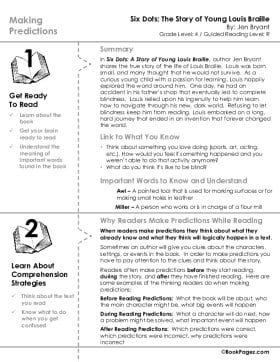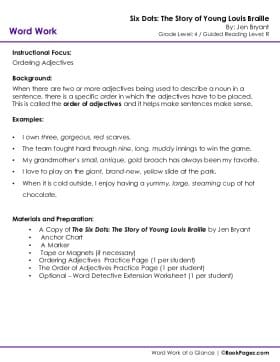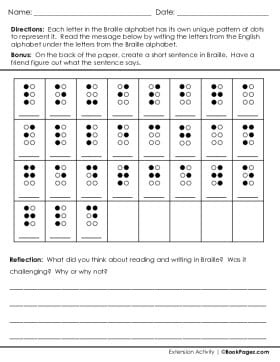Determining Importance with Six Dots: A Story of Young Louis Braille


Use Six Dots: A Story of Young Louis Braille by Jen Bryant to strengthen your students' comprehension skills, build their vocabulary, and help them understand how words work.






This word work lesson plan and set of teaching resources use Six Dots: A Story of Young Louis Braille by Jen Bryant as a springboard for instruction focused on parts of speech.
By anchoring word study to the text, students will benefit from seeing how the order of adjectives is used inside of the text before engaging in both guided and independent practice with adjectives.

This set of vocabulary development resources for Six Dots: A Story of Young Louis Braille highlights the words that are most important for students to know and understand while reading the book. Through engaging in fun word games, matching words to definitions and pictures, and practicing how to categorize words, students will develop the vocabulary necessary to comprehend this story and many others.


Use this Running Record to assess oral reading fluency with Six Dots: A Story of Young Louis Braille. Track meaning, structure, and visual accuracy using the first 100 words of the text to determine whether or not this book is a good fit for the readers in your classroom.




